Top Rankings
Union City School District ranks among the top 20% of public school district in Tennessee for:
Category
Attribute
Math Proficiency
Highest math proficiency (Top 20%)
Diversity
Most diverse schools (Top 1%)
For the 2025 school year, there is 1 public middle school serving 475 students in Union City School District. This district's average middle testing ranking is 9/10, which is in the top 20% of public middle schools in Tennessee.
ОЫОЫВю»ӯ Middle School in Union City School District have an average math proficiency score of 47% (versus the Tennessee public middle school average of 33%), and reading proficiency score of 39% (versus the 34% statewide average).
Minority enrollment is 54% of the student body (majority Black), which is more than the Tennessee public middle school average of 39% (majority Black).
Overview
This School District
This State (TN)
# Schools
3 Schools
672 Schools
# Students
1,707 Students
315,543 Students
# Teachers
112 Teachers
21,238 Teachers
Student : Teacher Ratio
15:1
15:1
District Rank
Union City School District, which is ranked within the top 30% of all 147 school districts in Tennessee (based off of combined math and reading proficiency testing data) for the 2021-2022 school year.
The school district's graduation rate of 85-89% has stayed relatively flat over five school years.
Overall District Rank
#34 out of 147 school districts
(Top 30%)
(Top 30%)
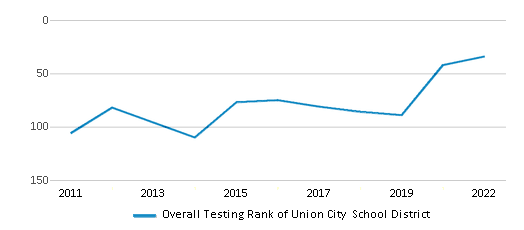
Math Test Scores (% Proficient)
40%
31%
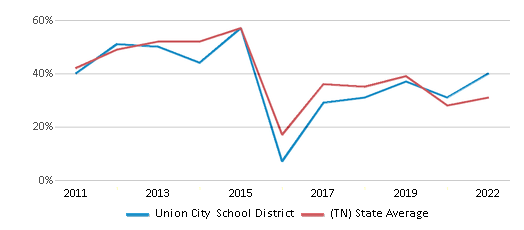
Reading/Language Arts Test Scores (% Proficient)
39%
37%

Science Test Scores (% Proficient)
41%
40%
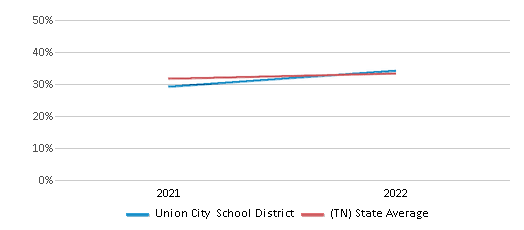
Graduation Rate
85-89%
90%
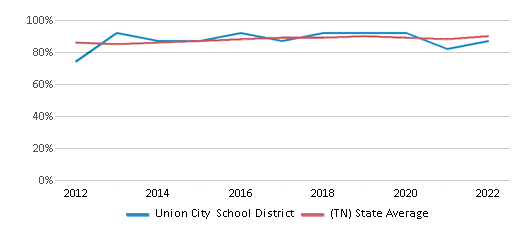
Students by Ethnicity:
Diversity Score
0.68
0.58
# American Indian Students
6 Students
486 Students
% American Indian Students
n/a
n/a
# Asian Students
20 Students
5,814 Students
% Asian Students
1%
2%
# Hispanic Students
260 Students
43,054 Students
% Hispanic Students
15%
14%
# Black Students
523 Students
61,375 Students
% Black Students
31%
19%
# White Students
781 Students
191,076 Students
% White Students
46%
61%
# Hawaiian Students
n/a
301 Students
% Hawaiian Students
n/a
n/a
# Two or more races Students
117 Students
13,437 Students
% of Two or more races Students
7%
4%
Students by Grade:
# Students in PK Grade:
149
4,463
# Students in K Grade:
163
8,748
# Students in 1st Grade:
145
9,053
# Students in 2nd Grade:
132
9,015
# Students in 3rd Grade:
121
8,869
# Students in 4th Grade:
105
9,837
# Students in 5th Grade:
125
18,109
# Students in 6th Grade:
116
70,329
# Students in 7th Grade:
120
74,290
# Students in 8th Grade:
114
74,350
# Students in 9th Grade:
140
8,695
# Students in 10th Grade:
103
6,911
# Students in 11th Grade:
95
6,404
# Students in 12th Grade:
79
6,470
# Ungraded Students:
-
-
District Revenue and Spending
The revenue/student of $11,503 in this school district is less than the state median of $11,979. The school district revenue/student has declined by 6% over four school years.
The school district's spending/student of $10,991 is less than the state median of $11,478. The school district spending/student has declined by 6% over four school years.
Total Revenue
$20 MM
$12,104 MM
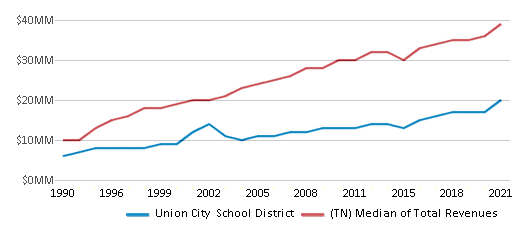
Spending
$19 MM
$11,597 MM
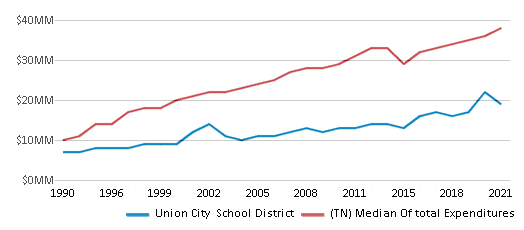
Revenue / Student
$11,503
$11,979
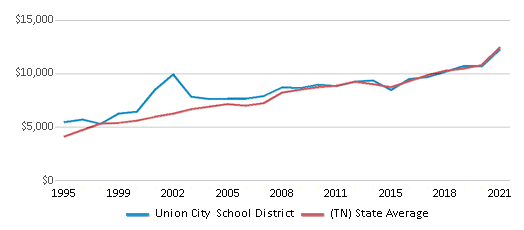
Spending / Student
$10,991
$11,478
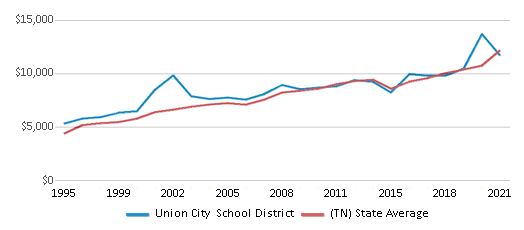
Best Union City School District ОЫОЫВю»ӯ Middle Schools (2025)
School
(Math and Reading Proficiency)
(Math and Reading Proficiency)
Location
Grades
Students
Rank: #11.
Union City Middle School
(Math: 47% | Reading: 39%)
Rank:
Rank:
8/
Top 30%10
1111 High School Dr
Union City, TN 38261
(731) 885-2901
Union City, TN 38261
(731) 885-2901
Grades: 5-8
| 475 students
Recent Articles

Year-Round Or Traditional Schedule?
Which is more appropriate for your child? A year-round attendance schedule or traditional schedule? We look at the pros and cons.

Why You Should Encourage Your Child to Join a Sports Team
Participating in team sports has a great many benefits for children, there is no doubt. In this article you will learn what those benefits are.

White Students are Now the Minority in U.S. ОЫОЫВю»ӯ Schools
Increasing birth rates among immigrant families from Asia and Central and South America, combined with lower birth rates among white families, means that for the first time in history, public school students in the United States are majority-minority. This shift in demographics poses difficulties for schools as they work to accommodate children of varying language abilities and socio-economic backgrounds.





